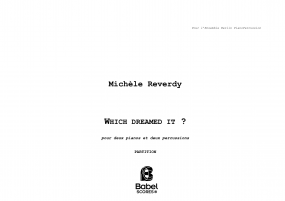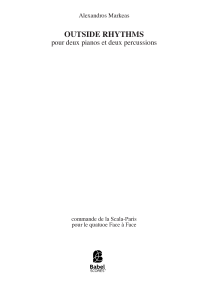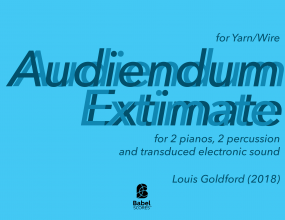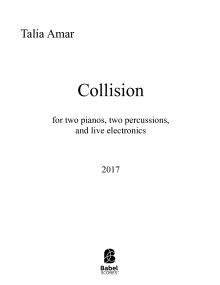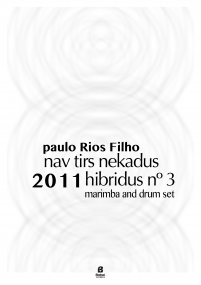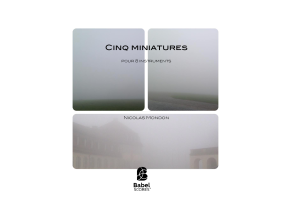Recherche avancée
Occupied Spaces
ISMN : 979-0-2325-5013-8
- Identifiez-vous pour créer une liste
Occupied spaces is a piece that explores timbre through a series of 11 ‘rooms’ or spaces. Some of these spaces have been modeled after physically existing rooms, others are either imagined (and do not follow the rules of physics), or occur inside your head. There are three impulses in the piece: a zipper, a clap and a balloon pop that are inserted into these rooms. These three sounds have been filtered to various degrees and, over the course of the piece, frequencies are added to the impulses, creating an increasingly noisy texture.
The piece has six sections and an introduction. The sections determine not only which rooms are presented, but also the degree of the pitch-to-noise ratio present at any given time. In each section, impulses have been organized into various strands of material. Each strand comes from a two part theme that is presented in the first section. Each section takes this theme and destructively varies it. The piece begins with an introduction of the zipper that hints at some of the characteristics of the rooms, followed by section 1 that presents rooms 1-4 and the basic two strands of thematic material. Section 2 introduces rooms 5 and 6 and the strands begin to grow and overlap. Section 3 presents rooms 7 and 10 and the possibility of 3 simultaneous strands and 2 overlapping rooms. Section 4 introduces room 8, and strands begin to multiply and deteriorate the rooms. The zipper attempts to intervene, but is repetitively stopped by room 8. Section 5 begins after a final failed attempt of the zipper to break free, followed by the first iteration of room 9. The material tentatively resets; however, the rooms have deteriorated and reflections begin to multiply. The strands multiply and grow and the reflections densify until they have completely saturated all of the rooms. A final iteration of the clap, balloon and zipper form the climax of the piece. Section 6 is marked by the second iteration of room 9, which takes the final climactic impulse and leads the listener into the final new room: # 11 - a resonant soup and ghost of the previously heard impulses. This final room reminisces with a small band-width of frequencies from the previously heard impulses. The piece closes with a brief recapitulation and final presentation of fragments of the original theme and a brief presentation of select rooms.
Pages - 54






